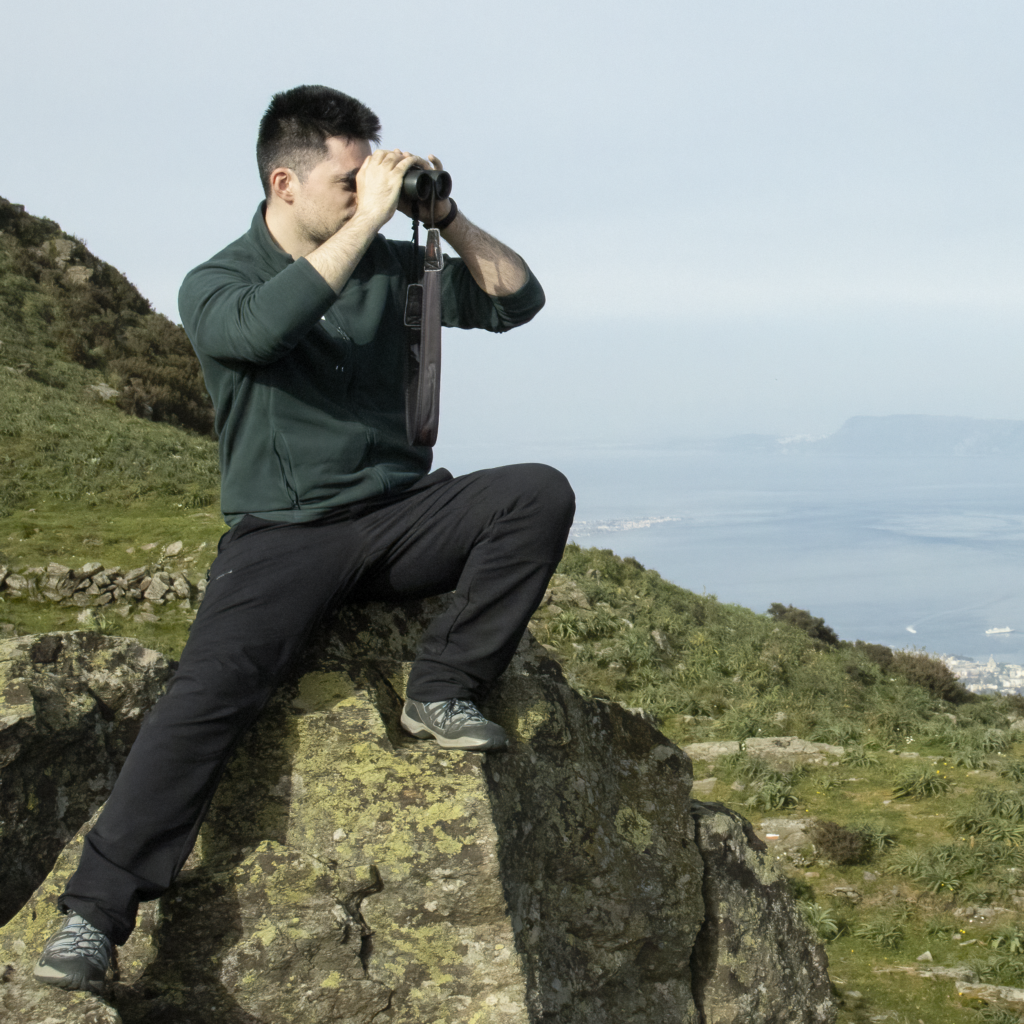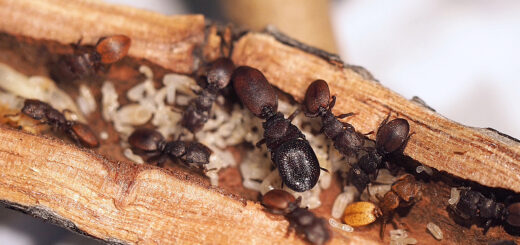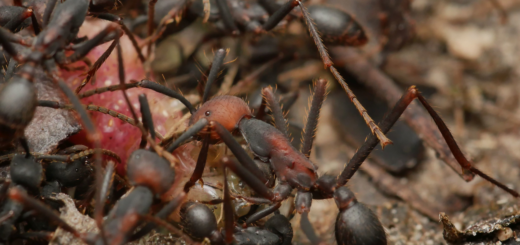Meet Subject Editors of Myrmecological News! (Part 2)

It is high time to put in the spotlight the Subject Editors of Myrmecol. News that have worked for many years to help the journal become what it is today. We asked them a few questions on their ant research, what they think is an ideal original article, what the future may bring for myrmecology, and what makes for a healthy working environment. Here is Part 2 of this interview series – check out their diverse answers. (And see here for Part 1 of this interview series, as well as here for interviews from 2021 with then recently appointed Subject Editors)
Flash interviews compiled by Florian M. Steiner

Edit by Salvatore Brunetti


MNB: What (ant) topics do you work on?
IP: As an agroecologist, my research delves deeply into the intricate dynamics of ant communities within agroecosystems, with a particular emphasis on their pivotal roles in pest control. My fascination lies in the complex ecological interactions involving ants and how these can be harnessed to benefit sustainable agriculture. For instance, in the biologically rich environment of Mexican coffee farms, my work has focused on unraveling the ecological web surrounding the arboreal ant species, Azteca sericeasur. This ant, which resides in the canopy of shade trees, engages in a mutualistic relationship with the green coffee scale—often considered a pest by farmers. While this might initially seem detrimental, the association reveals a hidden ecological benefit. Near their nests, ants inadvertently shield the larvae of coccinellid beetles, which are vital predators of the green coffee scale, from their natural enemies. The beetle larvae, cloaked in protective waxy filaments, thrive in these ant-protected zones, eventually developing into adult beetles that disperse throughout the farm to control the scale insect population.
Expanding on this theme, my research in the coffee plantations of Puerto Rico investigates the complex competitive interactions among three dominant ant species engaged in a form of intransitive competition akin to “rock, paper, scissors.” These dynamic interactions engender a constantly shifting spatial pattern, which significantly influences pest control and has profound implications for managing biodiversity and enhancing crop resilience. Through these studies, I aim to illuminate the potential of harnessing ant behaviors to generate self-sustaining autonomous pest control mechanisms.
MNB: From your personal perspective, what are some characteristics of the ideal original article (on ant research)?
IP: My response to this inquiry is relevant to the broader discipline of ecology. An optimal approach for advancing our understanding of natural communities encompasses an integration of natural history, theoretical ecology, and empirical data derived from field or laboratory experiments and surveys. It is evident that the field of ecology is increasingly gravitating towards theoretical modeling and the use of big data, employing advanced analytical techniques. While these methods are valuable, there is a risk of overlooking the insights gained through direct observation and fieldwork. This trend, though somewhat less pronounced in ant ecology, is still discernible. Field observations and natural history remain indispensable for generating novel insights within ant ecology.
MNB: What will be timely topics in ant research in the next five years?
IP: There is still so much that we don’t know related to ant ecology. Every time I go to the field, I come back with a million questions. If I had to prioritize areas in ant research, given my interest in agroecology, I would say that understanding ants’ contribution to sustainable agriculture is an area of research that should be emphasized. This emphasis is especially pertinent in tropical regions, where ants constitute a substantial percentage of the animal biomass. Ants exert both beneficial and detrimental influences on agroecosystems, yet our understanding of how to manage these systems to maximize positive impacts while minimizing negative ones remains limited. Therefore, comprehensive research in this area is essential to harness the ecological potential of ants in developing sustainable agricultural practices.
Another emerging research area of increasing importance, deserving focused attention in the coming years, is the exploration of microorganisms’ roles within ant biology and ecology. Beyond merely cataloging the ant microbiome, which itself is crucial, there is a need to delve into the nuanced interactions between ants and microorganisms. This underexplored frontier holds significant potential to advance ant research and could offer sustainable solutions for agroecosystem management. For instance, ants that engage in soil bioturbation are likely to foster a distinct soil microbial community compared to non-bioturbating species and this can have an effect on crop productivity or interactions with pests and pathogens. Similarly, the bacterial symbionts of ants have been shown to produce antibiotics that are potentially effective in fighting plant pathogens. These interactions not only capture the scientific imagination but are also now investigable with modern techniques, highlighting their relevance and timeliness for future studies.
MNB: What is important for a healthy work environment?
IP: Put down your cell phone!!! Forget about social media and internet, go outside, let nature speak to you and let your imagination run wild.
When working with a group of people, good communication and mutual respect is essential for a good working environment. And don’t forget to have fun!

MNB: What (ant) topics do you work on?
HH: I have never been good at focusing, and I enjoy working with diverse topics and many collaborators, even if most of my work has concerned Formica. My own key interest is evolution, mechanisms and consequences of queen number regulation and dispersal, all the way from behavioural experiments to population consequences (with my PhD student Anu Halonen) and underlying genetics (lead by Lumi Viljakainen and Hanna Sigeman). With Philip Downing, who’s a MSCA post doc with us in Oulu, we work on comparative analyses of social evolution. I collaborate with Dalial Freitak and her group in Graz on self-medication in ants. I have also very much enjoyed being on board in Jonna Kulmuni’s group’s work on hybridization in Formica. I also like to collaborate with theoreticians, both in evolutionary theory and philosophy of science. I’m involved in studies of cooperative defences of pine sawfly larvae with the group of Carita Lindstedt in University of Helsinki. And I also lead Ötökkäakatemia (“the Bug Academy”), a science communication project for popularizing studies of insect ecology, evolution and conservation. Collaborating with many people is a great way to learn new things and broaden perspectives!
MNB: From your personal perspective, what are some characteristics of the ideal original article (on ant research)?
HH: There are many ways to make a great paper, of course – new technologies that open new insights, painstaking observations that reveal exciting phenomena, thoroughly designed experiments, exciting natural history, a novel theoretical idea. But maybe the most I enjoy simple and innovative things that make me go “wow, that’s clever, why didn’t I think of that myself!” – not all great research needs big resources. Also, a lot of the work I find fascinating has a strong basis in evolutionary theory, and goes beyond ants in the relevance of results – the laws of social evolution apply very broadly, and there is great value in looking for parallels and making comparison across taxa.
MNB: What will be timely topics in ant research in the next five years?
HH: I’m really looking forward to what GAGA will bring us. There are so many evolutionary and population genetic hypotheses that can be tested building on the genome data, especially when combined with the concurrent development of databases on phenotypic and life history traits across ants.
A second thing is eDNA – a lot of people at our department in Oulu are working on various applications of eDNA in conservation and ecology, and given the key roles ants play in ecosystems, there is a lot of scope for interesting work!
MNB: What is important for a healthy work environment?
HH: I’ve been head of department now for a year, so I have been thinking about this a lot. Lack of unnecessary hierarchies and barriers is a good place to start – this is quite easy in Finland, as our manners are very informal, and we all interact on a first name basis from 1st year students to professors. Transparency in decision making and making sure everybody has an opportunity to be heard as an important colleague are other essential things, so that there is a sense of community. Academia is competitive, and having to compete with the people you spend time with every day and who are your friends creates difficult feelings, but a strong sense of being in this together helps.
At the level of a research group, I think it is important that there is room for diversity of perspectives, and exploration and independent development of ideas for everybody. I try to encourage diversions and detours, and contributing to the academic community outside just our own research. Academia is hectic and competitive, and the temptation to focus narrowly on one’s own project is strong, but I believe that in the long run the crazy attempts, weird collaborations and the times you left your comfort zone pay off in terms of broadened perspectives and new ways of thinking.

MNB: What (ant) topics do you work on?
AVS: We work on almost anything ant related in the lab, and most projects are student driven. Some themes in our research include ant invasions, patterns of body size variation within and among species, and biomechanics of trap-jaw ants.
MNB: From your personal perspective, what are some characteristics of the ideal original article (on ant research)?
AVS: One thing I like to see is a clear question and motivation for the study. Ideally, authors will place their question in the context of previous work in the introduction and then explain how their results fill gaps in the existing literature in the discussion. I also like to see simple but creative experiments that provide insight into mechanism. Some of the best papers have very straightforward methods. Papers rooted in natural history are also very valuable as we still know so little about the biology of most ant species.
MNB: What will be timely topics in ant research in the next five years?
AVS: I have always been bad at predicting the cutting edge of a field. However, there are a few areas that are getting very exciting for ant research. First, I think that ants will become a major model system for developmental biology. Despite their remarkable plasticity, and the ground-breaking work by scientists such as Nijhout and Wheeler, ants never really took off as an evo-devo system. However, recent work by Abouheif and his lab members have demonstrated ants are ready to make their mark. Ants are also emerging as a model for functional genetics / genomics thanks to the tools being developed in places like the Kronauer lab.
MNB: What is important for a healthy work environment?
AVS: 1. Work / life balance. I did not always practice this, but I really appreciate how important it is now particularly for students or young faculty members who risk getting burned out.
2. Practicing sound time management. This is key for productivity and sanity. Keeping a calendar for deadlines, making lists to prioritize projects, protecting your personal time – whatever it takes to help you manage your time.
3. Mentoring. Mentoring relationships need to be individualistic, based on the specific needs of each mentee, and grounded in mutual respect.
4. DEI – Diversity, Equity, and Inclusion. Diversity is the core of ecology and evolutionary biology. And much like biodiversity is important for ecosystem functioning, and genetic diversity is important for populations, a healthy work environment requires diversity, equity and inclusion.

MNB: What (ant) topics do you work on?
JD: The greater topic I am working on is biodiversity in agricultural landscapes. This includes research on causes and consequences of biodiversity decline, concepts and concrete measures to reverse the decline and monitoring of biodiversity indicators. I am in particular interested in an agroecological transformation of agricultural systems. Ant topics in this context are management of extensive and semi-natural grassland and, recently, hedgerows as habitat of ant species.
MNB: From your personal perspective, what are some characteristics of the ideal original article (on ant research)?
JD: For me as an ecologist, the ideal original article is on ant ecology, including novel insights on ant-ant, ant-non-ant and ant-environmental interactions, ecosystem functions and services performed by ants or ecosystem engineering by ants. As an editor, I love to see many true replications and appropriate controls.
MNB: What will be timely topics in ant research in the next five years?
JD: Given the rapid global environmental change, I see the response of ant species and ant communities to land-use and climate change and the spread and impacts of invasive ant species as timely topics. I would be interested to learn whether ants could be indicators of change or of mitigation of change.
MNB: What is important for a healthy work environment?
JD: Trust. In a healthy work environment, we as scientists can trust in our peers, superiors, and institutions, and they trust in us. In a healthy work environment, we can trust in the data and information provided to us and in that the data and information we provide are trustworthy. A healthy society trusts in the data and facts provided by science.





Recent Comments